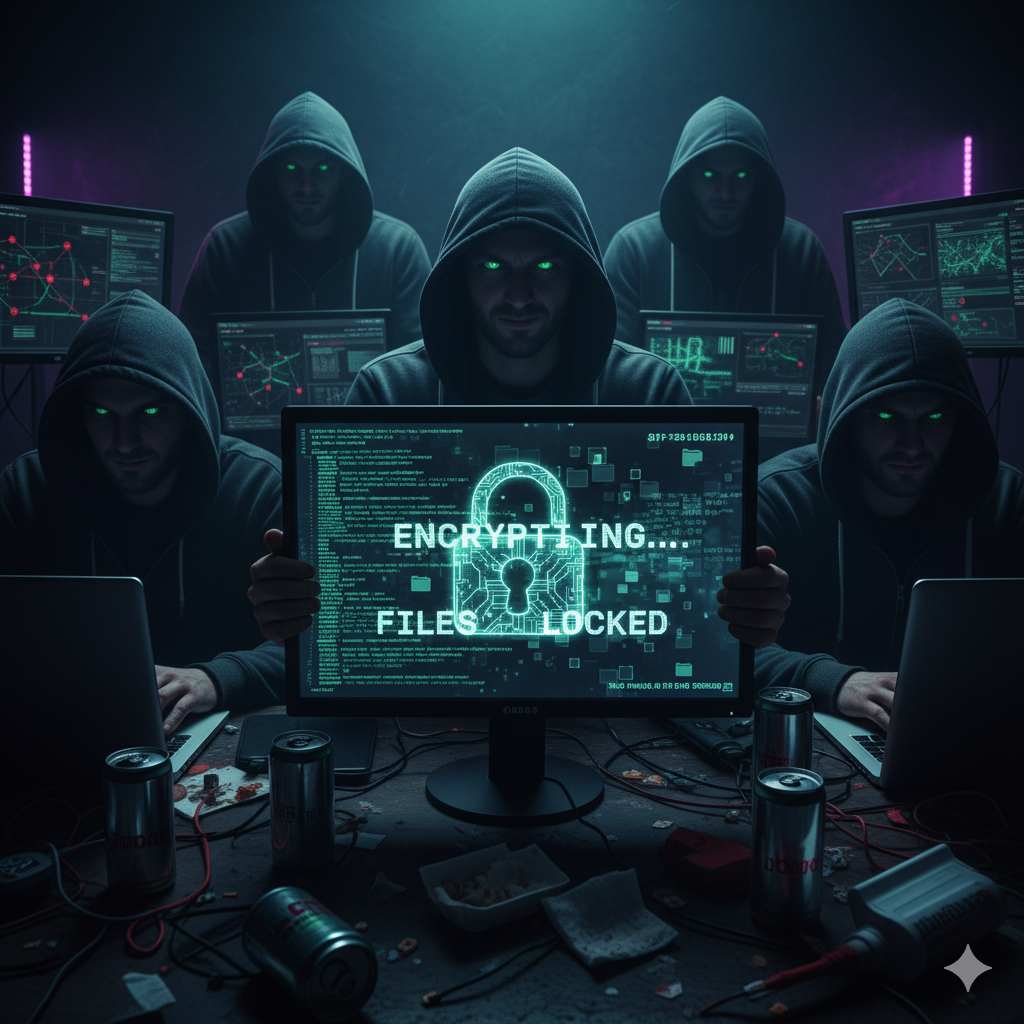Ransomware’s Worst Nightmare: A SLED Leader’s Guide to Pure Storage’s New Cyber Resilience Arsenal
September 28, 2025
Ransomware’s Worst Nightmare: A SLED Leader’s Guide to Pure Storage’s New Cyber Resilience Arsenal
It seems you can’t go a week without another headline that makes your stomach drop. This isn’t just a string of bad luck; it’s a terrifying trend. A recent report showed a 65% surge in ransomware attacks against government agencies this year alone.
| State | Victim / Sector | When (2025) | What Broke (Impact) | Current Status (as reported) |
|---|---|---|---|---|
| MN | City of Saint Paul (municipal) | Late Jul–Aug | City took systems offline; online services disrupted; National Guard cyber unit activated; public safety unaffected. St. Paul, Minnesota | Guard mission completed; city restoring services with state/federal partners. St. Paul, Minnesota |
| MD | Maryland Transit Administration (state agency) | Late Aug → Sep | Paratransit scheduling disabled; ongoing transit IT disruption; later confirmed data theft; Rhysida gang claimed attack. MD Transit Administration | Investigation and recovery in progress; some real-time tracking still impacted per reports. |
| PA | Office of the Attorney General (state agency) | Mid–Late Aug | Website, email, phones disrupted; staff locked out of court files; ransomware confirmed; gang later claimed multi-TB data theft. Pennsylvania Attorney General’s office | Services largely restored; investigation ongoing; no ransom paid (per reports). |
| SC | Spartanburg County (county govt) | Sep | Data breach confirmed; attributed to Qilin ransomware group. Spartanburg County, SC | Forensic work & notifications underway. |
| LA | Orleans Parish Sheriff’s Office (parish law enforcement) | Sep | Ransomware attack confirmed by agency; claimed by Qilin. Orleans Parish Sheriff’s Office | Incident response and assessment continuing. |
| OH | Lorain County Auditor’s Office (county govt) | May → Sep notifications | Personal data notifications after spring attack claimed by Global/INC. Lorain County Auditor’s Office | Notifications issued; investigation continuing. () |
This isn’t a hypothetical horror story happening “somewhere else.” It’s the reality for SLED organizations across the country. The clock isn’t just ticking; it’s a time bomb. Public trust evaporates, services halt, and the recovery is a brutal, expensive slog. For years, we’ve been told that a good backup is our get-out-of-jail-free card.
I’m here to tell you that’s a dangerous lie.
Reactive backup is a losing strategy. In the time it takes you to realize you’ve been hit, the attackers have already encrypted your backups, stolen your data, and are planning their victory lap. It’s time to stop just buying insurance and start building an arsenal. It’s time for Active Cyber Resilience.
Your Storage is Now a Threat Detector (And Your New Best Friend at 2 a.m.)
Remember the bad old days? You’d get an alert, and the first thing you’d do is start digging through endless log files, trying to piece together what happened while the attacker was still running rampant in your network. Your storage was just a dumb box, a silent witness to the crime.
Those days are over.

At Accelerate NYC, Pure Storage announced a fundamental shift: your storage is now an active, intelligent part of your security team NYC Pure Storage Accelerate September 2025.
-
The CrowdStrike Integration: Think of this as giving your data storage a direct, red-phone hotline to your Security Operations Center (SOC). When CrowdStrike’s industry-leading platform detects a threat, your storage array knows about it instantly. It can be automatically instructed to take defensive measures, like immediately securing your most critical data snapshots before the attacker can even get close to them. It’s no longer just a victim; it’s a first responder. Crowdstrike and Pure
-
The Superna Integration: This is like having a digital security guard watching every single file, 24/7. Superna’s technology monitors for unusual and malicious user behavior. Is a service account that normally just reads files suddenly trying to encrypt or delete thousands of them? Busted. The integration can instantly lock that compromised account down, stopping a ransomware attack dead in its tracks.
For understaffed SLED IT teams, this is a game-changer. It’s automated protection that doesn’t require another person staring at another screen. It’s the difference between finding out about an attack on Monday morning and stopping it at 2 a.m. on Saturday. Superna and Pure
Practice Makes Permanent: The Cyber Fire Drill You’ve Always Needed
Let’s be honest. Your disaster recovery plan probably lives in a beautifully formatted, three-ring binder that’s currently being used as a monitor stand. Everyone knows it exists, but has your team ever actually tested it, end-to-end?
Of course not. Because doing so on your live systems would be like holding a fire drill during final exams. It’s too disruptive. Too risky.
So, you cross your fingers and hope it works. If your recovery plan is based on hope, congratulations—the ransomware gang just found their next customer.
This is where the new Pure Protect Recovery Zones come in Pure Protect Recovery Zones. Think of it as a full-fidelity, cyber “fire drill” simulator for your entire data center. With a few clicks, you can instantly spin up a clean, completely isolated copy of your production environment.
In this secure sandbox, you can:
- Test your recovery procedures without any risk to live public services.
- Train your IT staff on the exact steps to take during a real crisis.
- Validate that your critical applications—from student information systems to emergency dispatch—will actually come back online as expected.
This isn’t a theoretical plan anymore. It’s a practiced, proven capability. When the city council or the school board asks, “Are we prepared?” you can look them in the eye and say, “Yes. We’ve done it. We’ve practiced it. We are ready.” That’s a conversation worth having.
A Unified Command Center for the Chaos
The moments after an attack are pure chaos. You’ve got too many tools, too many cooks in the kitchen, and everyone is running around with their hair on fire. The recovery process is often a messy, manual scramble that takes days, if not weeks.
To fix this, we announced a groundbreaking new offering: Cyber Resilience as a Service with Veeam Cyber Resilience as a Service with Veeam.
Instead of juggling flaming chainsaws blindfolded during a crisis, this gives your team a unified command center with big, clearly labeled buttons. It turns a complex, multi-day manual process into a guided, policy-driven workflow designed to get you back online fast. It’s about orchestrating a clean, reliable recovery you can trust.
This isn’t just about making life easier for your IT team; it’s about shortening the time that critical public services are down. Every minute you save is a 911 call that goes through, a student who can access their lessons, or a public utility that stays online.
Conclusion: Build Your Arsenal, Fortify Your Agency
The fight against ransomware has evolved. Your defense must evolve with it. The old model of passive backup is obsolete. The new model is Active Resilience, and it’s built on three core pillars:
- Detect: Use your storage as an intelligent sensor to stop attacks before they can do damage.
- Rehearse: Turn your theoretical recovery plan into a practiced, proven capability.
- Recover: Simplify the chaos of recovery with a unified, automated command center.
This isn’t just about new features; it’s a new philosophy. It’s about empowering the cities, schools, and states we rely on every day with the tools they need to fight back and win.
Is your agency’s data truly safe? Don’t wait for a crisis to find out.
Contact us today to schedule a complimentary Cyber Resilience Workshop and learn how to build your active defense strategy.
